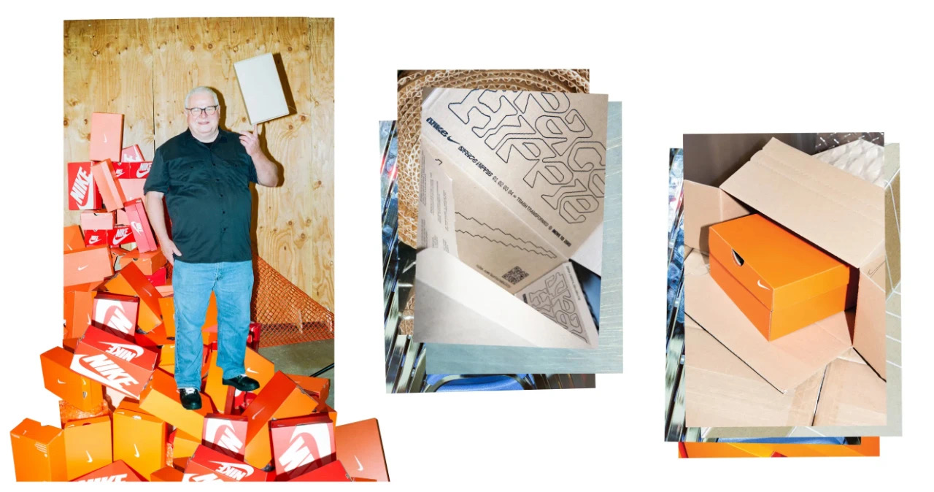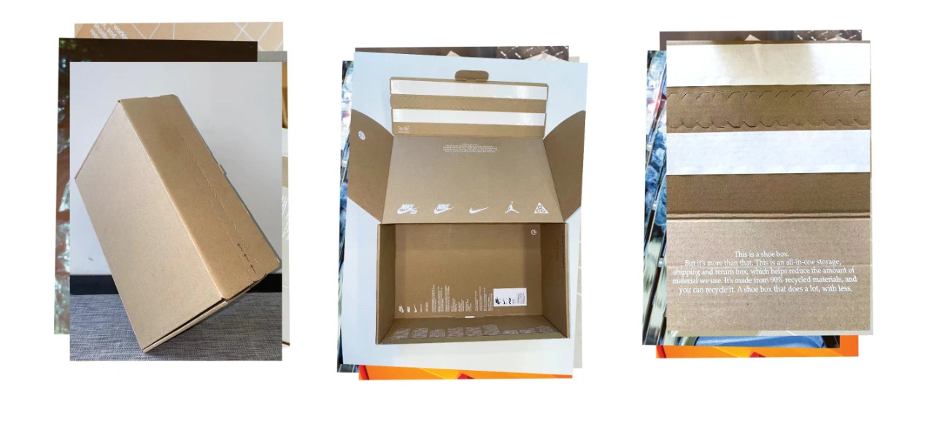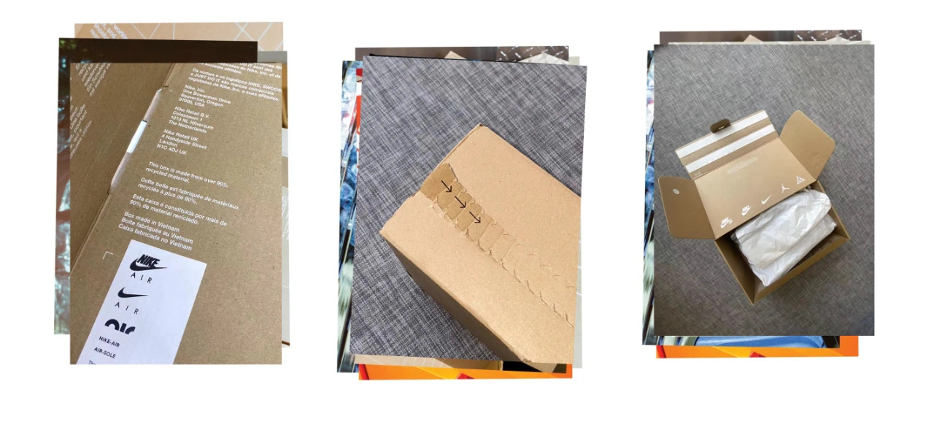Sustainability has become a new consumer trend, with more and more consumers hoping to take action with brands to make sustainability a way of life. As a global leader in sportswear, Nike is continuously innovating solutions and partnering with consumers to better protect the Earth and the future of sport. In March 2023, Nike announced an expansion of the "One Box" project, promoting more eco-friendly e-commerce consumption. By the end of the FY25, Nike China expects to reduce approximately 414 tons of shoe packaging waste through project promotion, accelerating the Move to Zero ("zero carbon emissions" and "zero waste") process.
"One Box" is an innovative environmental project that Nike began piloting in 2022. It breaks the rules by combining shoeboxes with shipping boxes, reducing packaging waste and carbon emissions in the "last mile" of delivery. The "One Box" itself is made from a high percentage of recycled materials and is mainly used for single-item e-commerce shoe orders, achieving a 51% reduction in waste and carbon footprint per single order. With the continued growth of Nike's digital business and the expansion of the project's application scale, more Nike shoes in the Chinese market will be delivered using "One Box", allowing consumers to contribute to environmental protection together.
Breaking the rules, bold innovation
More and more consumers are looking forward to green packaging methods that are more “environmentally friendly, reduced, and recyclable”. A survey by the China Consumers Association in March 2023 revealed that 88.1% of consumers choose products with minimal packaging for personal use, and 62.4% believe that product packaging should be recycled in the future. In Nike's survey, 86% of consumers expressed a desire to take action with the brand to make life more environmentally friendly.
When products purchased online are transported, an additional larger shipping box is often added to the original product packaging, creating a common environmental problem in e-commerce. Nike's innovation with the "One Box" is based on insights into consumer demand and active exploration of solutions to industry environmental challenges. The initial idea for this creative solution emerged three years ago with the launch of an environmentally friendly shoe series, Space Hippie, a groundbreaking sustainable shoe. How could packaging also be innovated to be more eco-friendly? It was during the creation of the Space Hippie series that the idea of redesigning the shoebox came to light.

Nike's idea was to break the rules and create a "One Box" that could serve as both a shoebox and a shipping package, being environmentally friendly itself. This may sound simple, but like all cutting-edge concepts in any industry, it required a significant amount of work to make it a reality. With the success of the Space Hippie shoe, the application scale of the "One Box" also expanded. During this process, consumer feedback guided improvements to the "One Box," such as enhancing its durability, safety, and reliability for long-term use. Through continuous testing, adjustments, and enhancements, the Nike team created a more robust environmentally friendly shoebox and demonstrated that this design could be used on a larger scale.
Less is more – the secret of the small shoebox
The "One Box" embodies Nike's understanding of consumer demands and the design principle of "Less Is More."

When you firstly see the "One Box," you'll notice that it's different from the traditional Nike shoebox. The packaging box, made from recycled materials, is more robust, with no coloring or coating on the surface, and even common text printing is absent. The "One Box" looks more like a standard shipping box to ensure greater safety and reliability during shipping and delivery. Its "unremarkable" appearance reduces its environmental footprint, a deliberate choice for environmental considerations.
In line with the simple and plain appearance of the shoebox, Nike placed brand information inside the box, using white ink instead of colored ink for printing. Colored ink printing could potentially leave marks on the shoe sole during transportation. Additionally, choosing white ink also considers the water usage for pattern printing. Nike aimed for a simple design to minimize the overall environmental footprint.

The "One Box" is sealed with a single strip of tape, and once consumers receive it, they can quickly open it by pulling the tear strip on the box lid. Considering the need for returns and exchanges, a second strip of tape is added inside the shoebox, and consumers can reseal the box following the printed instructions.
Continuous environmental innovation.
The continued growth of domestic e-commerce consumption is driving the industry to explore various green and low-carbon packaging solutions. The "One Box," as a pioneering project in the "green packaging" field, reflects Nike's ongoing environmental ingenuity. In the process of continuous improvement and enhancement of the project, it also faces common challenges in paper packaging, such as waterproofing, compression resistance, and reuse. Chang Yuan, Vice President of Operations and Logistics for Nike Greater China, stated, "There is no doubt that we are leaders in this field, but our journey has just begun."
Just as Space Hippie inspired a disruptive packaging solution, the "One Box" is also sparking new ideas, such as reducing the amount of paper used for toe stuffing and eco-friendly packaging for single-item clothing products. Today, Nike has fully transitioned to using 100% renewable materials for clothing product packaging. Other related measures include minimizing the use of tape in packaging, using FSC-certified paper materials, and digitizing e-commerce paper orders.
The small shoebox is becoming another link for Nike to collaborate with consumers in environmental protection, further advancing the process toward a more sustainable future.
(The above content is provided by the brand, and the authenticity of the data is the responsibility of the brand. This article has both Chinese and English versions. If there is any inconsistency, the
Chinese version shall prevail.)